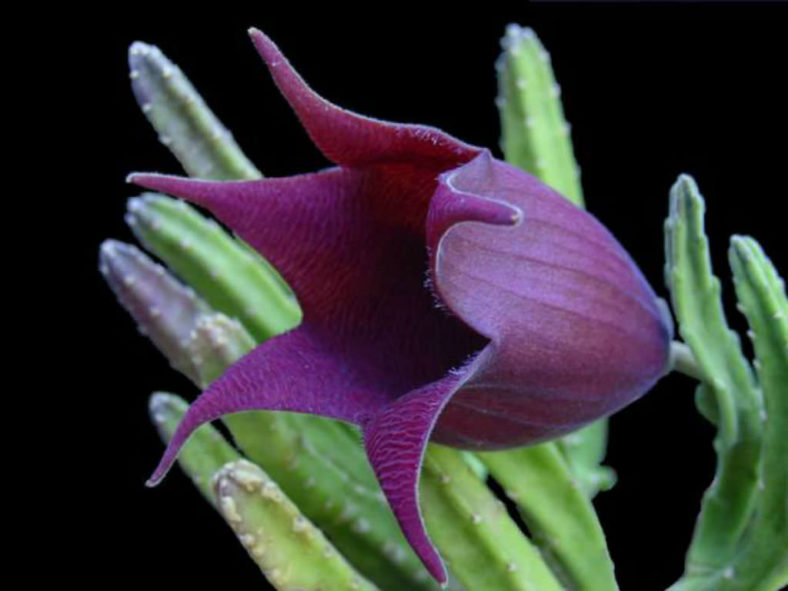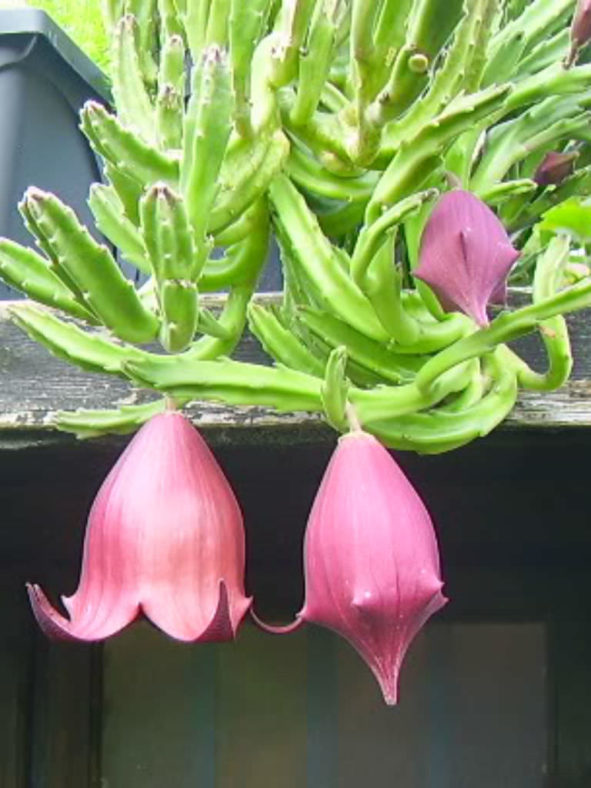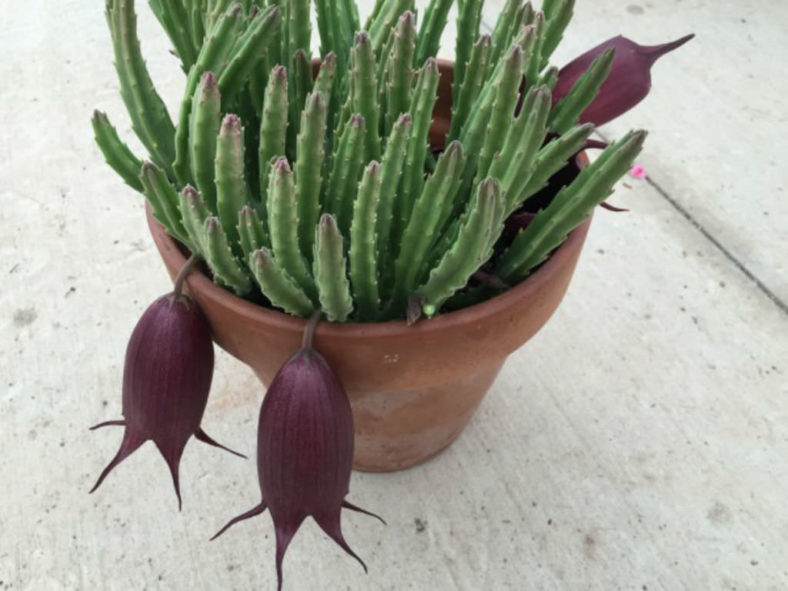Scientific Name
Stapelia leendertziae N.E. Br.
Common Name(s)
Black Bells, Maroon Cup Starfish, Rugose Cup Starfish, Star Flower, Carrion Flower
Synonym(s)
Ceropegia leendertziae, Gonostemon leendertziae, Stapelia wilmaniae
Scientific Classification
Family: Apocynaceae
Subfamily: Asclepiadoideae
Tribe: Stapeliae
Genus: Stapelia
Etymology
The specific epithet "leendertziae" (pronounced "leen-DERTZ-ee-ay") honors Reino Leendertz, later Mrs. Pott (1869–1965), a Dutch botanist and the first official botanist employed at the Transvaal Museum, who first discovered the species at Heidelberg.
Origin
The native range of Stapelia leendertziae is located in the mountains of the northeastern escarpment of South Africa, extending from the Abel Erasmus Pass southwards to Barberton and Komatipoort, as well as into Swaziland.
Description
Stapelia leendertziae is an attractive succulent that forms large clumps of green, shortly pubescent stems with small tubercles on the angles and purple mottling towards the tips. The stems are quadrangular, decumbent with a short ascending base, and can grow up to 8 inches (20 cm) long and 1 inch (2.5 cm) thick.
The plant is most conspicuous in bloom due to its unique, large flowers, which arise near the base of the stems on short, stout stalks. The flowers are purple-brown to dark purple, bell-shaped to urn-shaped, and appear in late summer. They can reach a length of 3.2 inches (8 cm) and are nearly equal in diameter.

Forms of Stapelia leendertziae
How to Grow and Care for Stapelia leendertziae
Hardiness: USDA hardiness zones 9a to 11b: from 20°F (-6.7°C) to 50°F (10°C).
Several species are fairly easy to grow. Others, often those with slightly hairy stems and the more unusual flowers, are more challenging and require careful watering (with some fertilizer) during the growing season and complete water withdrawal during the winter months. A minimum winter temperature of 50°F (10°C) is acceptable if the soil remains dry. A heated growing bench or incubator can help delicate plants survive the colder months. However, many species live under shrubs in their habitat and prefer light shade rather than full sun.
A gritty compost is essential, and clay pots are advisable for the more delicate species. Some growers prefer mineral-only compost to minimize the chance of a fungal attack on the roots. A layer of grit on the compost's surface prevents moisture from accumulating around the base of stems.
Keeping Stapelias and their roots free of pests such as mealybugs. Fungal attacks often occur when insects damage stems.
See more at How to Grow and Care for Stapelia.
Links
- Back to genus Stapelia
- Succupedia: Browse succulents by Scientific Name, Common Name, Genus, Family, USDA Hardiness Zone, Origin, or cacti by Genus
Photo Gallery
Click on a photo to see a larger version.

